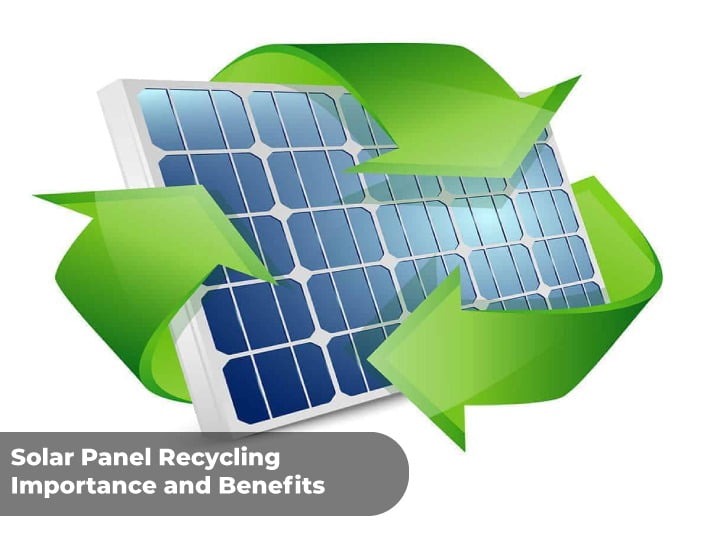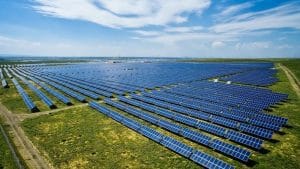With the large-scale utilization of photovoltaic power generation, the recycling of retired and waste photovoltaic modules has become an obvious problem, while also bringing huge new business opportunities to the industry.
Since the introduction of the benchmark on-grid electricity price in 2014, the domestic photovoltaic power generation installed capacity has grown rapidly, maintaining an average annual growth rate of more than 100%. At present, the cumulative installed capacity of domestic photovoltaic power generation has exceeded 200GW. It is estimated that in 2022, China’s cumulative installed capacity of photovoltaic power generation will exceed 300GW.
With the rapid development of photovoltaic power generation, the issue of recycling and reuse of waste photovoltaic modules has also emerged. According to the International Renewable Energy Agency (IRENA), by 2030, the accumulated waste of photovoltaic modules worldwide will reach millions of tons; and by 2050, it will reach tens of millions of tons. According to the Institute of Electrical Engineering of the Chinese Academy of Sciences, starting from 2020, the amount of waste photovoltaic modules in China will also increase significantly. By 2030, domestic waste photovoltaic modules can generate 1.45 million tons of carbon steel, 1.1 million tons of glass, 540,000 tons of plastics, 260,000 tons of aluminum, 170,000 tons of copper, 50,000 tons of silicon and 550 tons of silver.
Even if the existing PV power stations are well maintained, by 2034, the total number of retired PV modules in China will reach nearly 60GW. If the operation and maintenance of the power stations are average, the total number of retired modules is likely to exceed 70GW.By 2050, China’s waste photovoltaic panels will reach 20 million tons, which is 2,000 times the weight of the Eiffel Tower.
On the one hand, if these waste components are not properly handled, they will have serious negative impacts on the environment and society, making the original “green” intention no longer “green”.
On the other hand, the new energy industry is the main connotation and important support of low-carbon development and green economy, and low-carbon development and green economy are the driving force of the new energy industry. If the problem of waste photovoltaic components left over from the development of the photovoltaic industry is not properly solved, it will inevitably hinder the sustainable development of the photovoltaic industry.
The traditional development model based on resource and energy consumption has posed an increasingly severe challenge to the human living environment. Green development and the development and utilization of clean energy have become the main theme of development in the world. In this process, the photovoltaic industry has played an important role and will surely play a greater historical role.
But at the same time, the large-scale application of photovoltaic power generation has led to the recycling of waste photovoltaic components. Therefore, the study of the recycling and reuse of retired and waste photovoltaic components has a very positive practical significance.
First of all, the recycling and reuse of waste photovoltaic components is conducive to the reuse of resources.
The large-scale application of solar photovoltaic power generation technology will greatly increase the consumption of some rare metals. For example, the electrode preparation of crystalline silicon cells requires the consumption of silver, tellurium, indium, gallium, etc. These materials also have broad application prospects in other cutting-edge technology fields. If the rare metals in photovoltaic modules are not recycled after they are scrapped, it will inevitably cause great waste.
According to the research of the European Union PV CYCLE organization, in the waste photovoltaic modules, glass accounts for about 70% of the total weight, aluminum materials account for about 18%, and semiconductor materials account for about 4%.
In other words, most of the materials of photovoltaic modules have the possibility of recycling. Through the recycling and reuse of waste photovoltaic modules, rare metals, glass, aluminum materials and semiconductors can be recycled to achieve the purpose of reducing the exploitation of primary resources, reducing the energy consumption of resource refining, and reducing the impact and damage to the ecological environment.
Secondly, the recycling and reuse of waste photovoltaic modules can give birth to new industrial forms and create more employment value.
From the current recycling process of waste photovoltaic modules in Europe, the entire operation and management process of waste photovoltaic module processing includes collection, registration, transportation, recycling and recycling, etc. Each link requires a large number of personnel to participate, especially the recycling link requires professional recycling technicians. Therefore, the recycling of waste photovoltaic modules can give birth to new industrial forms and create more employment value.
Furthermore, the recycling and reuse of waste photovoltaic modules is conducive to achieving true greenness throughout the life cycle of photovoltaic power generation, thereby promoting the sustainable development of the solar energy industry.
Since the industrialization of photovoltaic power generation technology, governments and enterprises of various countries have been actively committed to the green production and operation of photovoltaic power generation. So far, the industrial chain of crystalline silicon photovoltaic technology has achieved pollution-free and environmentally friendly requirements from raw material production, cell manufacturing, module processing to system installation and operation, but the random disposal of waste photovoltaic modules has bred many environmental pollution problems.
The new energy industry is the main connotation and important support of low-carbon development and green economy, while low-carbon development and green economy are the driving force of the new energy industry, and the two complement each other. Therefore, only by doing a good job in the last link of the photovoltaic industry chain – the recycling of waste photovoltaic modules, can the photovoltaic industry be green and pollution-free from source to terminal, thereby promoting the sustainable development of the solar energy industry.




